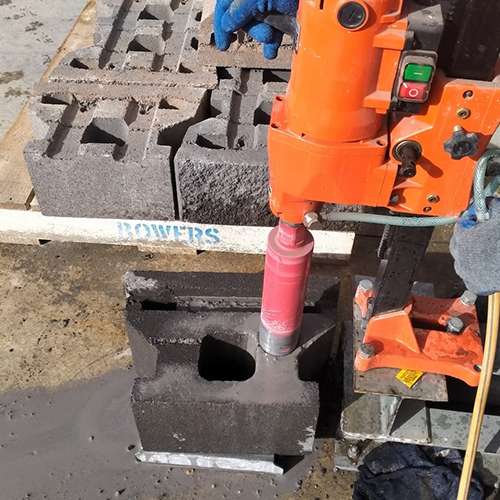Introduction
Quality is one of those generic, vague, and overused terms that most companies employ to highlight a degree of higher excellence or even superiority on their product and services. Everyone expects quality, whether it is of a new smartphone, a pair of jeans or the delivery of a meal at your doorstep. The criteria for measuring quality normally depend on the context and to be honest there is no single company in the world that would bring attention to their inferior or mediocre quality products and services if that was the case. This way the term quality does not have much value without benchmarking, to put it in other words, unless your product is measured, evaluated, and compared to the industry standards.
In New Zealand we have Standards New Zealand, which is an independent business unit within the Ministry of Business, Innovation and Employment (MBIE), which produce a range of standards, technical specifications, and codes of practice, which help deliver better value, greater economic efficiency, and that create a safer and more sustainable environment for all New Zealanders.
Concrete Masonry units and specifically Segmental Retaining Wall (SRW) units are required to meet the requirements of joint Australian/New Zealand standards; AS/NZS 4455.3:2008 and AS/NZS 4456:2003. In turn, if we would like to determine the Unconfined Compressive Strength of any Bowers Brothers concrete masonry units, we would need to refer exactly to AS/NZS 4456.4:2003, which sets the methods, requirements, and procedures to follow.
When talking about the compressive strength of our masonry units and our quality assurance and control processes, we can say the answer lies at the core.
Minimum Unconfined Compressive Strength
The Unconfined Compressive Strength test is a required property of concrete to control product integrity, and it is normally gauged in megapascals (MPa). A megapascal is simply a pressure measurement unit that represents force divided by area, and it is normally defined as N/mm2. The word pascal is named in honour of the French mathematician, philosopher, and physicist Blaise Pascal.
Some of the most popular SRW systems in the market, Allan Block® or Rocklok®, are based on hollow core units as the hollow cores reduce their product weight, freight charges and manufacturing costs. The local relevant standard, AS/NZS 4455.3:2008, suggests a minimum characteristic Unconfined Compressive Strength of just 10 MPa for retaining walls lower than 1.5 metres, and 12 MPa when the retaining wall height is between 1.5 metres and 10 metres. International standards such as ASTM C1372-17, usually require higher compressive strength values than those listed above, for example, the minimum requirement for compressive strength is 17.2 MPa on individual SRW units and 20.7 MPa on an average of three SRW units.
The introduction of the Rocklok® Retaining Wall system to the highway and infrastructure market required even higher quality control standards and product scrutiny to guarantee the product meets the New Zealand Transport Agency (NZTA) project specifications. For instance, the Te Ahu a Turanga: Manawatū Tararua Highway project highlights that all Rocklok® Retaining Wall blocks shall have a minimum 28-day compressive strength of 30 MPa.
Determining Unconfined Compressive Strength
Unless detailed on the project specifications, the minimum number of specimens required to determine the Unconfined Compressive Strength of concrete masonry products and in this case, the Unconfined Compressive Strength of the Rocklok® Retaining Wall System blocks, are 10 units for individual test in accordance with AS/NZS 4456.1:2003.
As more than 4,000+ units can be manufactured in a single production day, one of the key points of sampling is to ensure that the Rocklok® Retaining Walls units are selected from the lot in a well-distributed manner, this way sample units are carefully chosen and withdrawn at random intervals from the Columbia machine during the production day making it an accurate representation of the whole lot. On most occasions, a lot is defined as a full day of manufacturing, but that might change depending on what the client requesting the sample considers appropriate.
To simplify the process, usually the preference is to test whole Rocklok® Retaining Walls units, but that it is not as simple as it seems due to the difficulty in finding testing machines with enough loading capacity in the New Zealand market, so manufacturers must rely on part-units or drilled concrete cores, which is the case on the heavy duty Rocklok® Retaining Walls units.
The test cores are obtained by using a diamond core drill ensuring that the action is performed in such a way that the concrete cores are not weakened by mechanical shock or by heating, so water is introduced to the process as a cooling fluid.
Each cylindrical core extracted from a Rocklok® unit is uniquely identified by marking on them a number and the correspondent lot number. Once the required 10 units are obtained, they are carefully submerged in a temperature controlled curing bath (21°C ± 2°C), avoiding any source of contamination and damage. The samples are later delivered to a third-party independent laboratory with just enough time to be tested at the required 28-days.’
To complete the process, each cylindrical core is trimmed to a length to diameter ratio greater than 2, capped and placed in a compression testing machine and subjected to increasing loading until it fails. Because of the destructive nature of the test, each specimen is only used once. From the maximum load and the known cross-sectional area resisting the load, the Unconfined Compressive Strength is calculated and plot.


